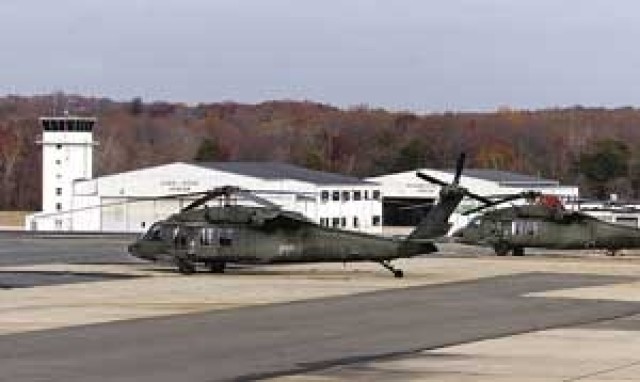Army officials and civilian community members came together Monday evening at the Davison Army Airfield Community Meeting to address the concerns of neighboring communities.
Community member Dino Carluccio had addressed Congressman Jim Davis about jet noise, particularly at night.
"What prompted my letter to Congressman Davis is that we have two young boys and we're trying to get our sons to bed at night. However, are windows are rattling and everything. I'm no engineer, but it seems that if you were to fly a little higher, it would be a little less noise," said Carluccio.
But Airfield Manager Dennis Bennett explained there are certain missions that must take place using the airfield's Runway 1-4, which aligns with Carluccio's home. However, the purchase of the new radar equipment will allow more use of a different runway, Runway 3-2, which may help reduce the noise affecting Carluccio's family.
"We hope to send you out tonight with maybe not the answer you want, but an explanation," Davison Air Traffic Service Manager and Military District of Washington Airspace Manager Bill Dodson said.
Military officials provided the Fairfax County community residents with information on the missions they must accomplish, along with their airfield noise abatement initiatives.
"We plan to continue a proactive good-neighbor policy, restrict pattern operation, limit weekend operations, maintain quiet hours from 10 p.m. until 6 a.m., and to keep the noise levels down to zero," said Dodson. "But we have to practice in good weather, so [the pilots] will be proficient in bad weather.
"We mitigate the noise as much as possible. And to address your earlier comment about flying higher, we go as high as the FAA will allow us to go. Sometimes higher isn't better -the higher you go, the wider and longer [the area impacted by noise becomes.]"
Carluccio then asked, "What should be our expectation from what happened last year, to what happened this year, and what we can expect next year'"
"You have to realize 10 p.m. is based on missions set," said Dodson. "We try to turn the pilots away from the housing areas as early as possible. Most of our traffic had to go to Runway 1-4 last year, next year may be different. Runway 3-2 is our prominent runway, but I can't make any promises because there were too many variables to figure out."
Dodson emphasized that air traffic patterns at Davison are based on mission requirements. While air traffic officials make every effort to keep aircraft away from civilian neighborhoods, it's not always possible based on mission.
"We pulled the helicopter pattern in as much as we possibly can. But we surely don't run aircraft over your house, [for the sole purpose of flying] over your house."
After explanations from the military officials, Carluccio said he felt more satisfied about the noise and optimistic about continuing a good relationship with military and government officials.
"I can't tell you how helpful it's been. I fully appreciate all you do and your missions. The openness has been tremendous," said Carluccio.
Military officials asked that Carluccio and other neighbors wait at six to eight months to inform them whether or not the neighborhood noise has decreased as result of the use of Runway 3-2.


Social Sharing